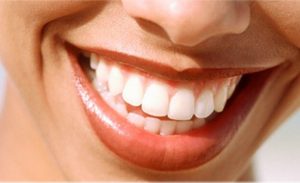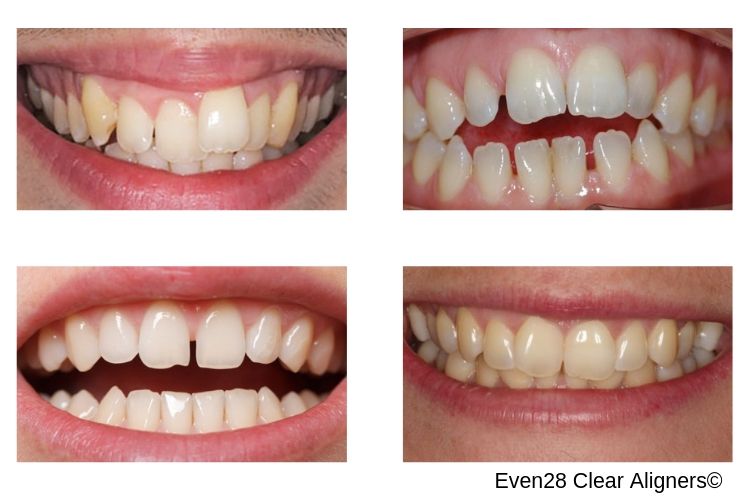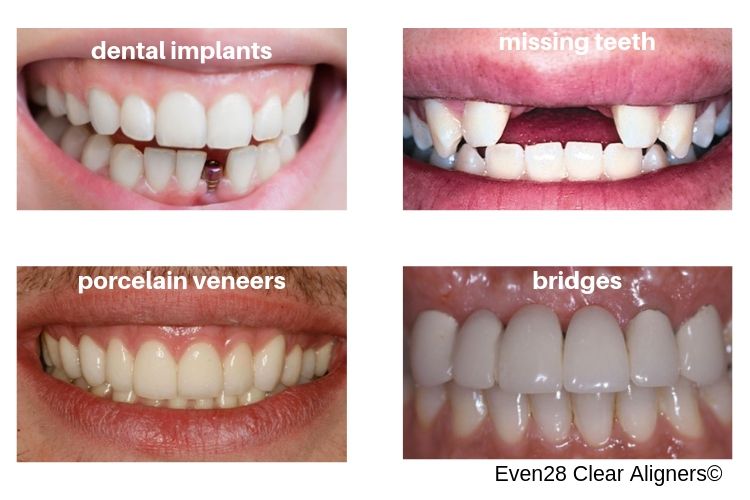7 Questions to help you decide if at-home clear aligners are right for you
At-home clear aligners are a relatively new concept. Examples of at-home clear aligners providers include Smile Direct Club™ and Candid Co™. More and more people are turning to at-home clear aligners to straightening their smiles at the convenience of their own homes. There’s no denying that at-home clear aligner therapy is convenient and in most instances, more affordable than dentist-delivered alternatives. The big question here is “am I a candidate for at-home clear aligner treatment?” The answer to this question depends on how complex your orthodontic treatment is. Complete the quiz below to get an idea of how likely you are to qualify for Smile Direct Club™ and Candid Co™ clear aligners:
At-home clear aligner assessment quiz
What you need to know before starting at-home clear aligner treatment:

The quiz above helps you determine how likely you are to qualify for at-home clear aligners. A high score means that you’re likely to qualify for at-home clear aligners. This means that you can straighten your smile at the convenience of your own home using Smile Direct Club™, Candid Co.™, Byte™, or Even28 at-home™. A low score indicates that you’re probably not a good candidate for at-home clear aligners. Consider going with dentist-delivered clear aligners, like Invisalign® or ClearCorrect™, or braces. Let’s take a closer look to see how each question impacts your chances of qualifying for at-home clear aligners:
 Examples of orthodontic conditions which are good candidates for at home clear aligner therapy.
Examples of orthodontic conditions which are good candidates for at home clear aligner therapy.
Questions #1: Front teeth versus back teeth
Clear aligners work wonders when it comes to straightening your front teeth. Wearing aligners can fix just about any orthodontic problem with your front teeth. This includes closing gaps, straightening crooked teeth, rotating front teeth, and so much more. On the other hand, clear aligners are quite ineffective when it comes to moving your back teeth, particularly the molars. If you need to move your back teeth then you must avoid at-home clear aligners. Consider going with dentist-delivered clear aligners, like Invisalign®, or wearing braces instead.
Questions #2: Bite problems
As we just discussed, at-home clear aligners are quite ineffective at moving your back teeth. Sure, clear aligners can move your back teeth a tiny bit, they’re really not meant to correct bite issues. In fact, wearing at-home clear aligners without proper dentist supervision is likely to make your bite situation worsen! You should never try to fix your bite relationship without proper dentist supervision. Consult your local dentist or orthodontist and choose Invisalign® or braces to fix your bite relationship.
Questions #3: Underlying orthodontic condition
You can use at-home clear aligners to fix certain simpler orthodontic conditions. Here’s how it works:
Gap teeth (Spacing)
Teeth crowding (crooked teeth)
If your only issue is having one or two crooked teeth that show when you smile, then at-home clear aligners may be your answer. Simpler crowding cases can be fixed using at-home clear aligners without having to visit your dentist regularly. However, severe tooth crowding does not qualify for at-home treatment and requires dentist supervision. Your dentist will have to create additional spaces to move your teeth into their proper position. Consider using Invisalign® to treat more complicated tooth crowding conditions. To learn more about how you can fix crowded teeth using clear aligners click here.
Overbite
Open bite
Underbite and Crossbite
Underbites and crossbites are very difficult to fix. Addressing these complex orthodontic conditions requires movement of your back teeth which can only be achieved with wires and brackets. As a result, neither case qualifies for at-home clear aligner treatment. In fact, underbites and crossbites usually don’t qualify for any sort of clear aligner treatment at all!
 Example of dental conditions which complicate at home clear aligner therapy.
Example of dental conditions which complicate at home clear aligner therapy.
Question #4: The condition of your mouth
Before starting any type of orthodontics program (clear aligners included) you need to evaluate the overall condition of your mouth. A few dental conditions can adversely affect your clear aligner program. Therefore, you must take these conditions into consideration prior to starting your clear aligner therapy. Let’s take a look at a few conditions that can impact your clear aligner therapy:
Missing teeth
Having one or two missing teeth does not automatically mean that you can’t straighten your teeth using clear aligners. What it does mean is that your teeth will not stay straight unless you close these gaps afterward. Therefore, it’s important to have a plan for replacing your missing teeth before starting clear aligner therapy. Larger gaps are usually filled with either a dental implant or bridge. This must be done soon after completing your clear aligner therapy. Work closely with your dentist to open up these missing spaces in order to create the necessary room to place a dental implant or bridge. Also, be sure to fill in these gaps as soon as you’re done with your clear aligner program. Otherwise, your straight teeth will slowly shift into the missing gaps and become crooked again!
Baby teeth
Baby teeth don’t affect your clear aligner program, but you need to be aware of their existence. Be prepared to remove these baby teeth once they become loose or infected and replace them with a dental implant or bridge.
Dental implants
We recommended that you avoid at-home clear aligner treatment if you already have a dental implant in your mouth. Consider dentist-delivered clear aligner treatments like Invisalign® or ClearCorrect™ instead. Dental implants are rigid objects that aren’t supposed to move during orthodontic treatment. You could end up damaging your dental implant without proper dentist supervision. This is very important, as any amount of force could potentially damage your dental implant. Be sure to let your dentist know if you have a dental implant in your mouth. Your dentist will work closely with the lab technician to avoid placing any forces onto your dental implant.
Bridge
Again, we recommend that you avoid at-home clear aligners if you have a bridge in your mouth. Bridges, similar to dental implants, can not be moved during clear aligner treatment. Therefore, you must follow the same protocol as dental implants if you have an existing bridge. Your dentist will design your clear aligner treatment to avoid stressing or damaging your bridge.
Porcelain veneers
Some of you may have porcelain veneers on your front teeth but still want to straighten your smile with clear aligners. There’s a good chance that you will have to replace your porcelain veneers once you finish your clear aligner program. It’s always best to straighten your smile with clear aligners before placing porcelain veneers. If you already have porcelain veneers in your mouth, you want to make sure you don’t move these teeth. Talk to your dentist before starting any clear aligner program to decide what the best course of action is.
You should always talk to your dentist before starting any type of clear aligner therapy. This is especially important if you already have extensive dental work. At-home clear aligner therapy without proper dentist supervision could damage your existing dental restorations. For those of you with plenty of existing dental restorations, we usually recommend going with Invisalign® instead. This way, your dentist can keep a close eye on your progress to make sure that you don’t run into any unexpected problems. Otherwise, you might have to redo your crowns, bridges, dental implants, etc. once you’re done with your clear aligner program.
Questions #5 & #6: Dentist clearance
You always need a thorough exam and a good cleaning before starting any type of orthodontic treatment. Clear aligner therapy is no exception. You must address any existing dental cavities or gum disease before straightening your smile. It’s risky and dangerous to wear clear aligners if you have any cavities or infected gums. This could lead to pain, infection, or even tooth loss! We recommended that you receive a comprehensive dental cleaning before starting any at-home clear aligner program. If you’ve seen a dentist within the past few months and everything checked out okay, then you’re all set to start your program. Otherwise, visit your dentist first and get a clearance to make sure that your teeth and gums are healthy enough to support clear aligners.
Question #7: Wisdom teeth
You should be aware if there are wisdom teeth in your mouth before starting any type of orthodontic treatment. We recommended that you remove your wisdom teeth if they’re expected to cause problems in the near future. Of course, this doesn’t mean that you can’t start clear aligner treatment if you still have your wisdom teeth. If you choose to keep your wisdom teeth, then there are a few extra steps that you should take. For example, be sure to wear your clear retainers every day if you choose to keep your wisdom teeth. Otherwise, your wisdom teeth could push on your remaining teeth and cause them to shift. Alternatively, consider placing a fixed retainer on your teeth instead. Fixed retainers are better at preventing your teeth from shifting when wisdom teeth push on them. Talk to your dentist to see if it’s okay to keep your wisdom teeth prior to starting your clear aligner program.
Are you a candidate for at-home clear aligner therapy?

Want to see if you qualify for at-home clear aligners? Purchase our Clear Aligner Assessment Kit to see if you’re a candidate for at-home clear aligner therapy. Use our kit to take your teeth impressions by following the simple instructions provided. One of our experienced dentists will analyze your impressions. We will let you know what your options are for straightening your smile (without ever stepping into the dentist office!) Here are the 3 possible outcomes:
- At-home clear aligners (SmileDirectClub™, Candid Co.™, Byte™, Even28 at-home™, etc.)
- Dentist-supervised clear aligners (Invisalign®, ClearCorrect™, etc.)
- Braces
We’ll even tell you approximately how long your treatment is going to take. By the way, there are no obligations to purchase any additional treatment. The only purpose of our CA assessment kit is to help you figure out the best course of action for straightening your smile. That’s all!